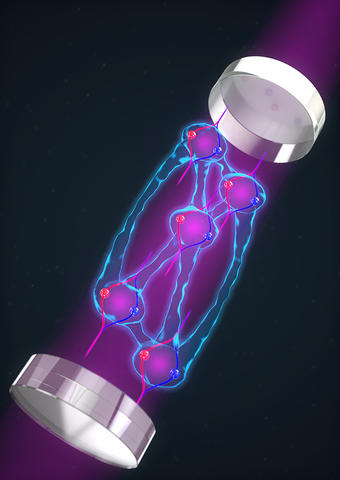By Kenna Hughes-Castleberry, JILA Science Communicator

A team of researchers at JILA has for the first time successfully combined two of the “spookiest” features of quantum mechanics to make a better quantum sensor: entanglement between atoms and delocalization of atoms. JILA is a physical science research institute operated by the National Institute of Standards and Technology (NIST) and the University of Colorado Boulder.
Einstein originally referred to entanglement as creating spooky action at a distance — the strange effect of quantum mechanics in which what happens to one atom somehow influences another atom somewhere else. Entanglement is at the heart of hoped-for quantum computers, quantum simulators and quantum sensors.
A second rather spooky aspect of quantum mechanics is delocalization, the fact that a single atom can be in more than one place at the same time.
As described in a paper published this week in Nature, a group led by JILA and NIST fellow James Thompson has combined the spookiness of both entanglement and delocalization. In doing so, these researchers have created a matter-wave interferometer that can sense accelerations with a precision that surpasses the standard quantum limit (a limit on the accuracy of an experimental measurement at a quantum level) for the first time. By doubling down on the spookiness, future quantum sensors will be able to provide more precise navigation, explore for needed natural resources, more precisely determine fundamental constants such as the fine structure and gravitational constants, look more precisely for dark matter, or maybe even one day detect gravitational waves.

